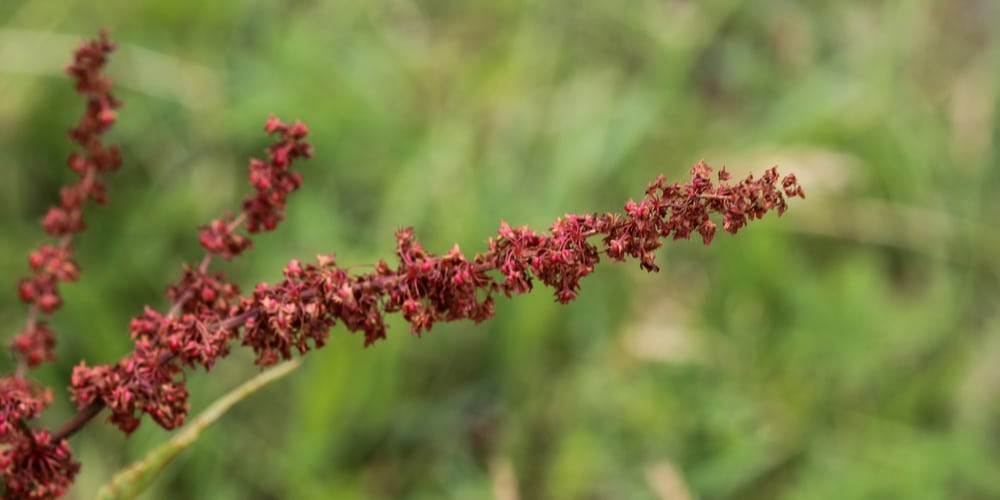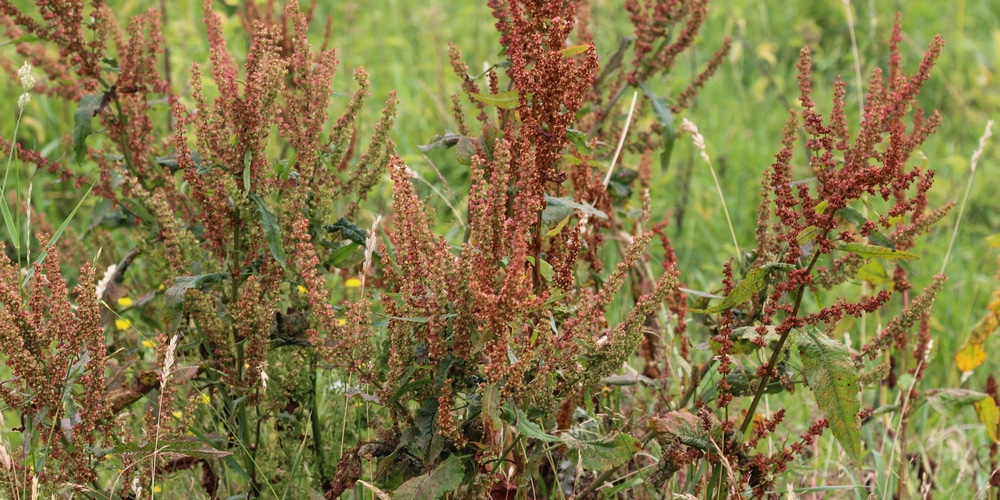Red sorrel is a weed that amongst grass and can be easily identified and distinguished from other plants in a lawn or garden. Scientifically named Rumex acetosella, red sorrel is classified as a perennial weed and a member of the buckwheat family, which is native to Europe.
Rumex acetosella produces a lot of pollen which contributes to hay fever if the weed is grown in a yard. If you find red sorrel disturbing in your yard, you should try eliminating it to reduce the dangers it might cause to your plants. This article will cover more on red sorrel and how to eliminate it.
Understanding red sorrel

Red sorrel is an all-season weed seen as intrusive in all USA states in gardens and lawns. Besides its scientific name, red sorrel is also referred to as sheep sorrel, field sorrel, or sour weed.
The term “sorrel” is derived from a french word, sour, which defines the acidic taste of the plant. While it is mainly seen as a weed, red sorrel is similarly used as a culinary green or herb with a wide range of medicinal benefits.
As a weed, red sorrel is a hardy plant that produces numerous leaves and grows in patches low to the ground. It grows to a height of about 10 to 40 centimeters tall. The leaves are bright green, with smooth surfaces and toothless but slightly curled leaf edges and arranged in a circular or rosette shape. They grow to about 6 centimeters long.
At maturity, this weed produces upright, slender, red or brown flower stalks with red or yellow tiny flower clusters.
It has a distinctive sour flavor mixed with grassy undertones and a tart taste, similar to sour apples or lemons. The flavor invites people looking for sour herbs to use it. Even though the plant is invaluable to humans, mostly used for medicinal value, it is toxic to most livestock.
Red sorrel can withstand acidic and low nutrient soils. Therefore, if you realize that a lot of red sorrels have dominated your garden or yard, note that you need to do some soil analysis.
Soil analysis will lead you to determine the exact pH and nutrient level of the soil to help you choose the best treatment to give your soil. Typically, soil pH greatly impacts plants’ ability to take certain nutrients from the soil, and knowing its value is critical when maintaining a garden, lawn, or landscape.
How to control red sorrel growth
The most critical step of weed control is identifying the method to use. The right method is usually based on the type and extent of weed invasion. For red sorrel, you can uproot the weeds, suppress them with lime, or use chemicals, all depending on the level of invasion.
Note that eradicating red sorrel can be very hard if you choose to do it using simple natural ways because it can easily regrow from the small root sections that remain in the soil. However, you can use hoes to remove weeds, most preferably on a warm, dry day, to remove all the roots from the surface.
Here are some simple methods of controlling red sorrel and how to deal with it regarding where it has grown.
General cultural methods
- Use lime: Apply lime to the soil until it reaches a pH of 6.5 to 7.0. However, this may not help if you have grown ericaceous plants. Instead of applying lime directly in this case, you can apply mulch that has spent mushroom compost, which can act as lime since it is highly alkaline.
- Use lime top dressers: Applying lime top dressers will help raise the soil pH to about 6 and reduce how vigorous the plant thrives because it prefers highly acidic soils.
- Topdress with calcium nitrate: Apply calcium nitrate of 35 to 70 grams per square foot to help reduce acidity within a short time frame.
- Avoid using acidic fertilizers: If sorrel is already present, avoid using ammonium and urea-based fertilizers as they increase the soil’s acidity.
Weed killer control
It is applied differently depending on where the sorrel weed has grown.
- In borders: Apply the non-selective glyphosate weed killer on a cleared border with no other beneficial plants. Glyphosate is non-selective and will work on all leaves where it is applied. Make sure you spray enough on the leaves and that most leaves get exposed to the chemical for them to die.
- Lawns: Apply one or two lawn weed killers containing 2,4-D plus mecoprop-P to eradicate red sorrel. Apply it when there is active turf and sorrel growth and make the second application after four weeks.
- In grasslands: Use a selective weed killer containing triclopyr that does not harm the grass. However, the chemical is non-sensitive and will damage any broad leaf plant in the grassland.
Conclusion
Red sorrel can disturb plants in a garden or grow amongst lawn grass in the yard. It also indicates that the soil lacks nutrients and is highly acidic.
To control it, consider the above methods to remove weeds and improve the soil alkalinity, so the weed does not grow again.
